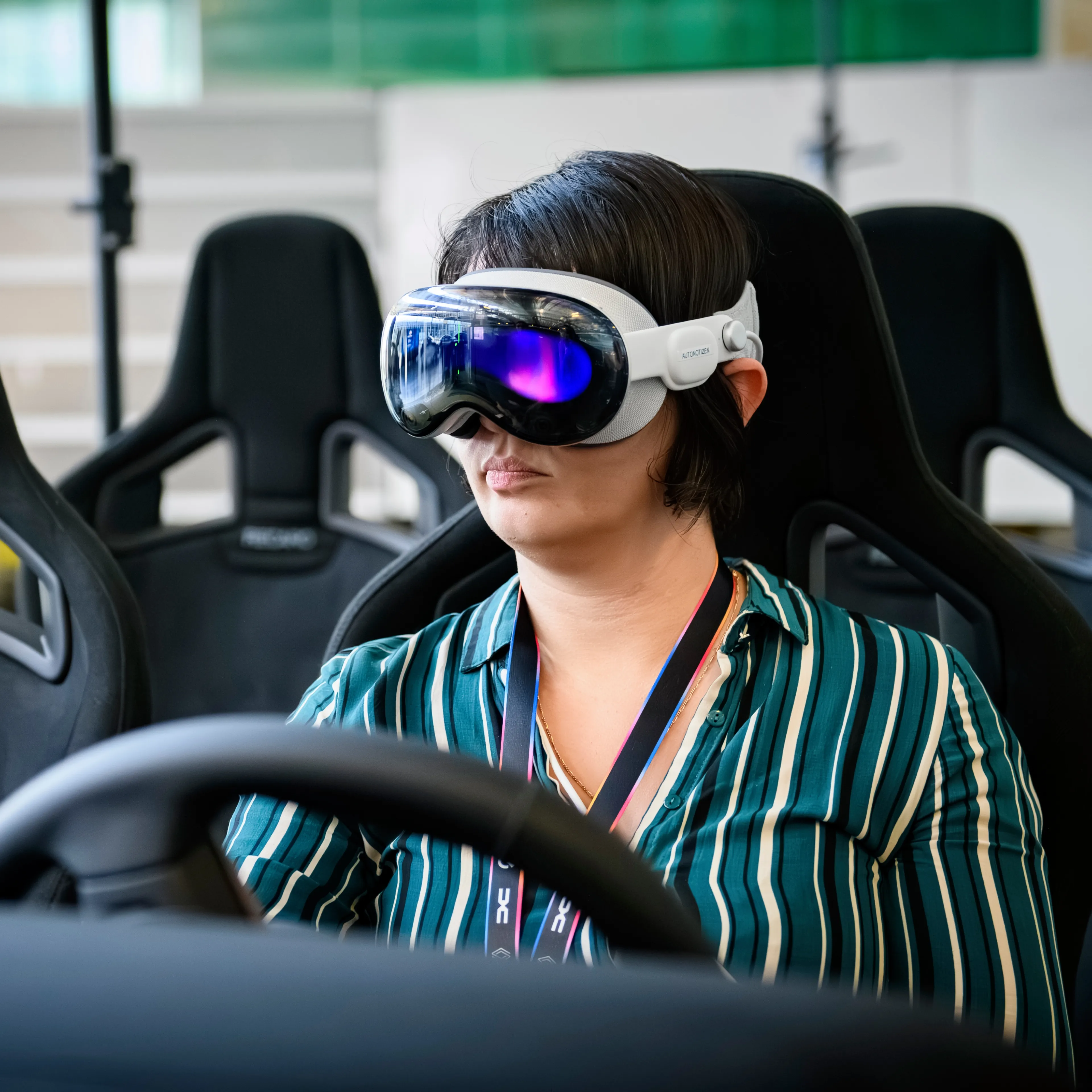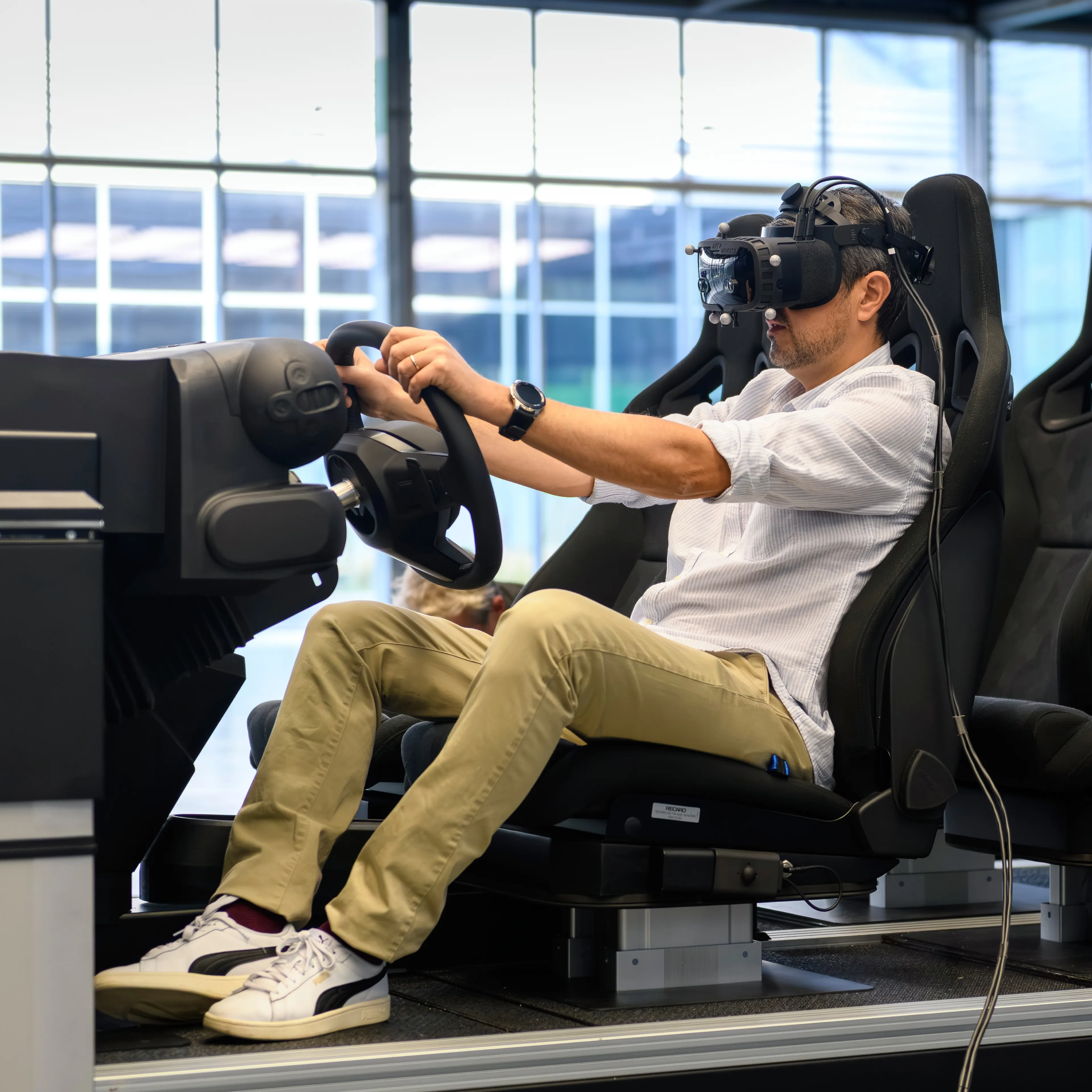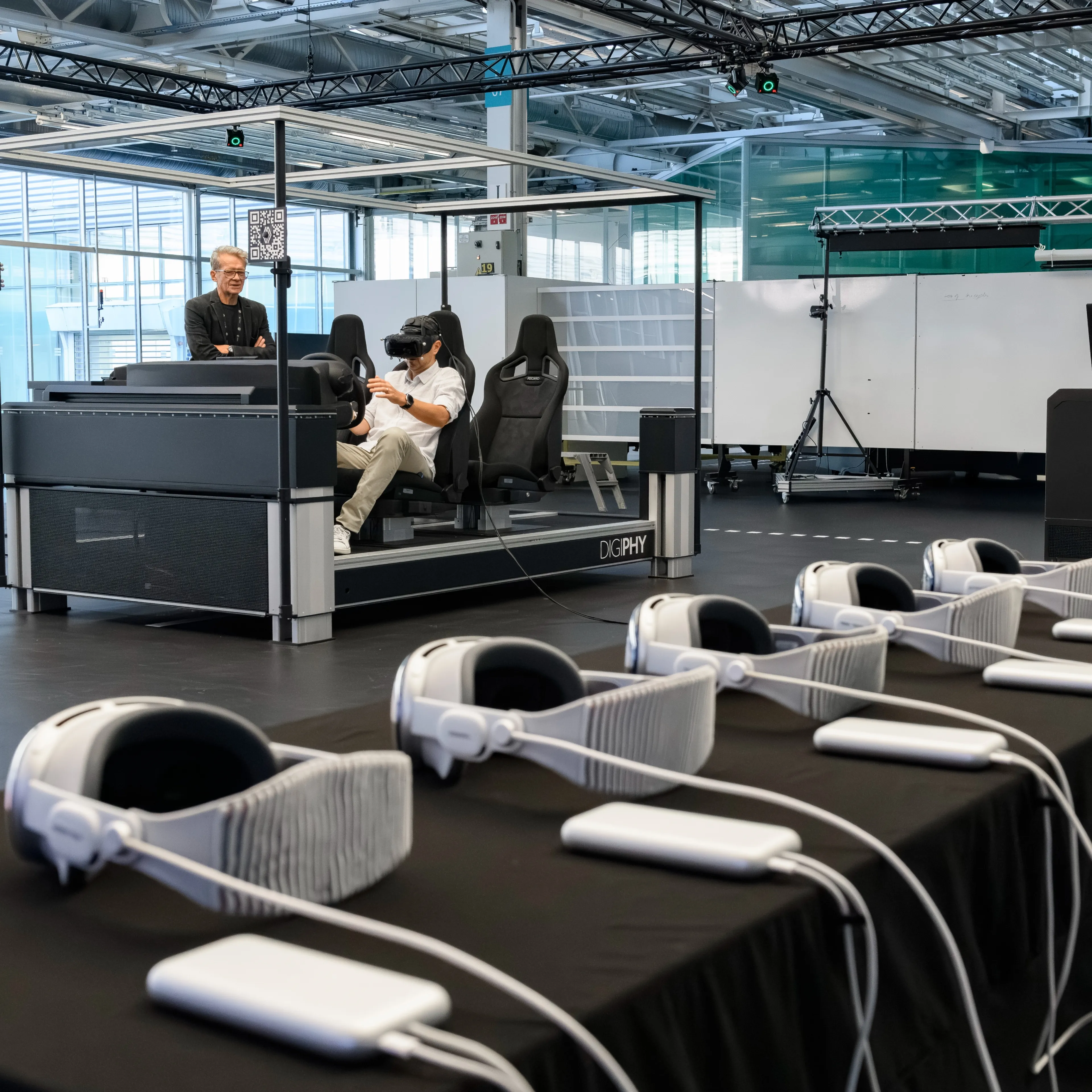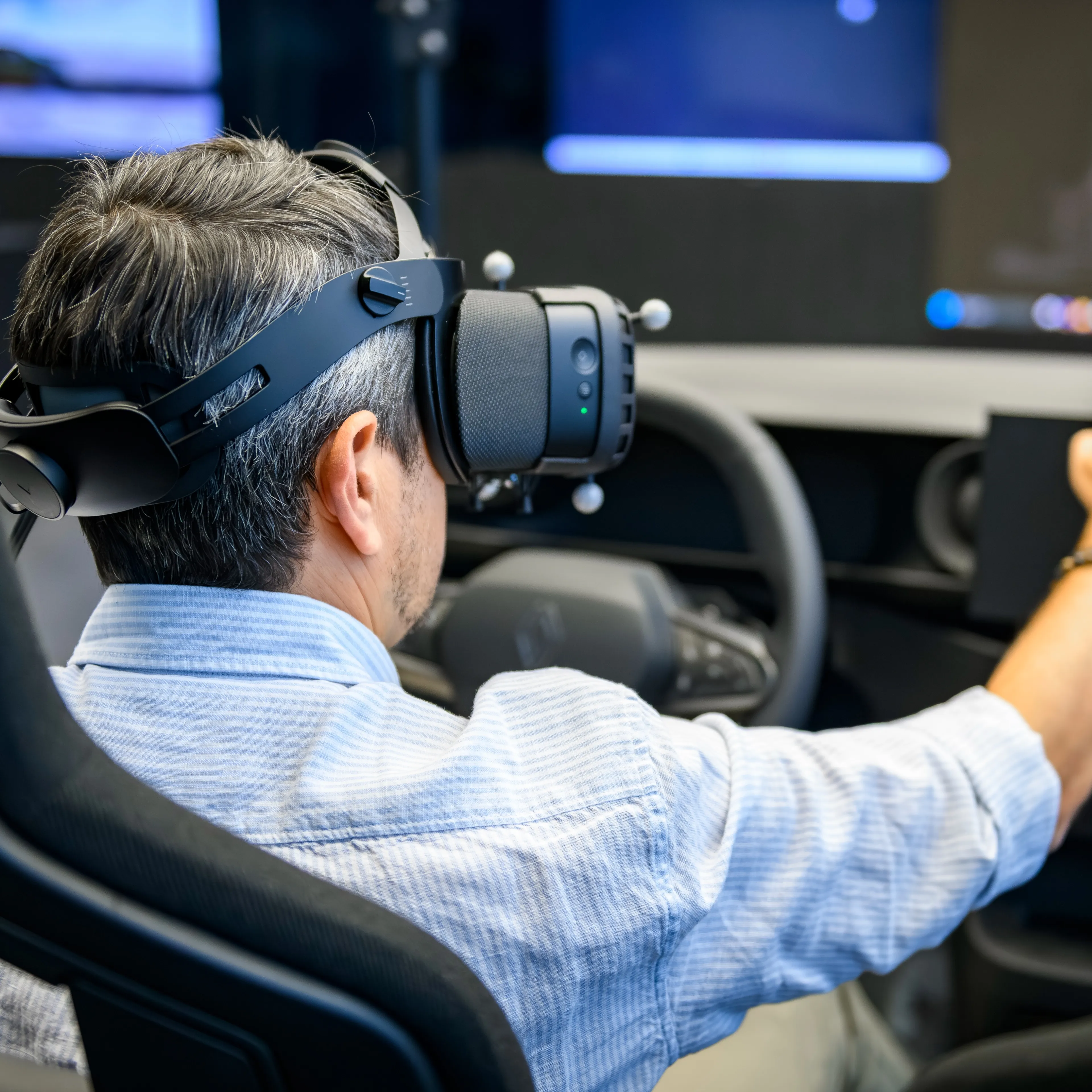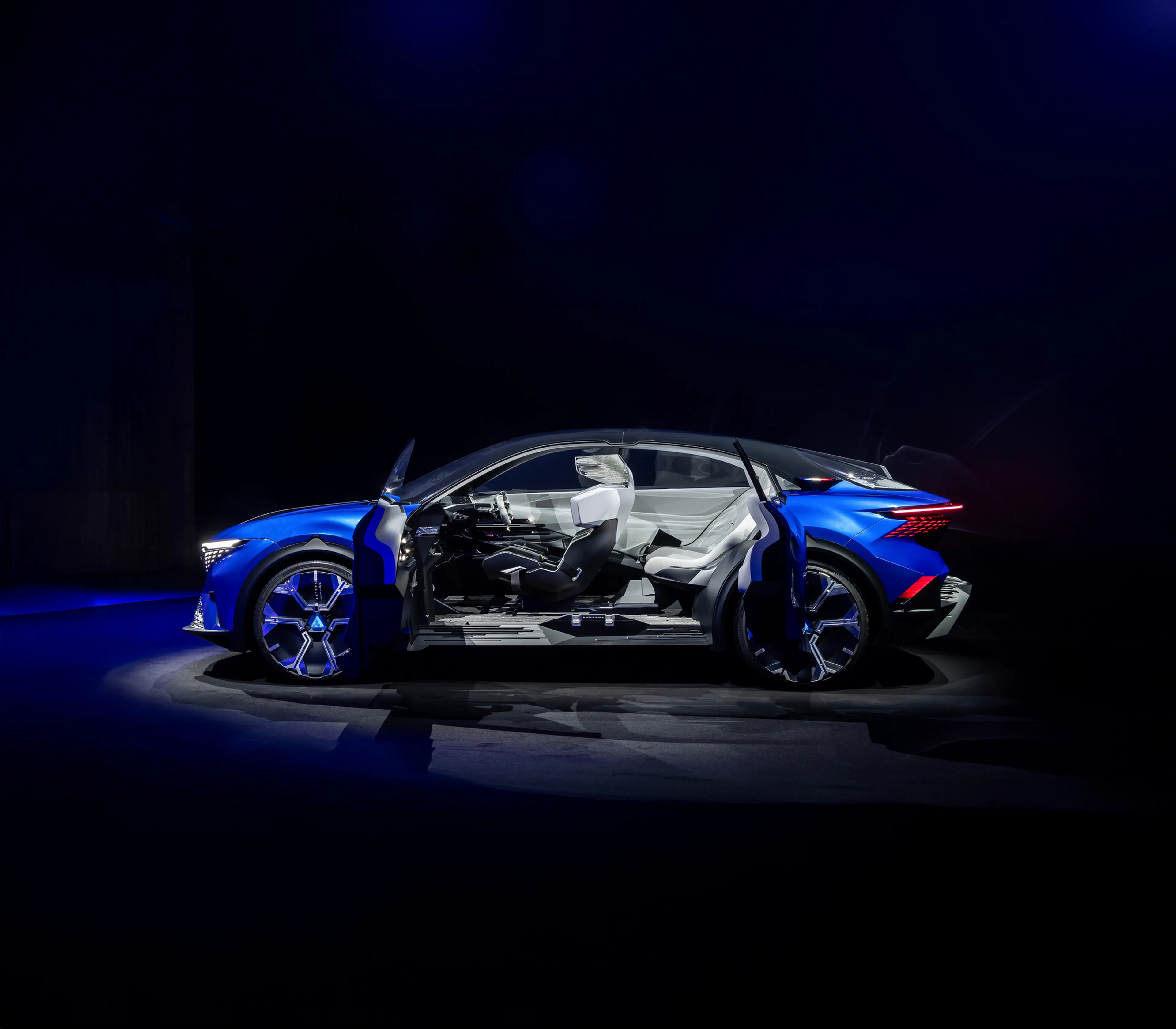Extended reality is transforming the way Renault Group designs cars
Published on
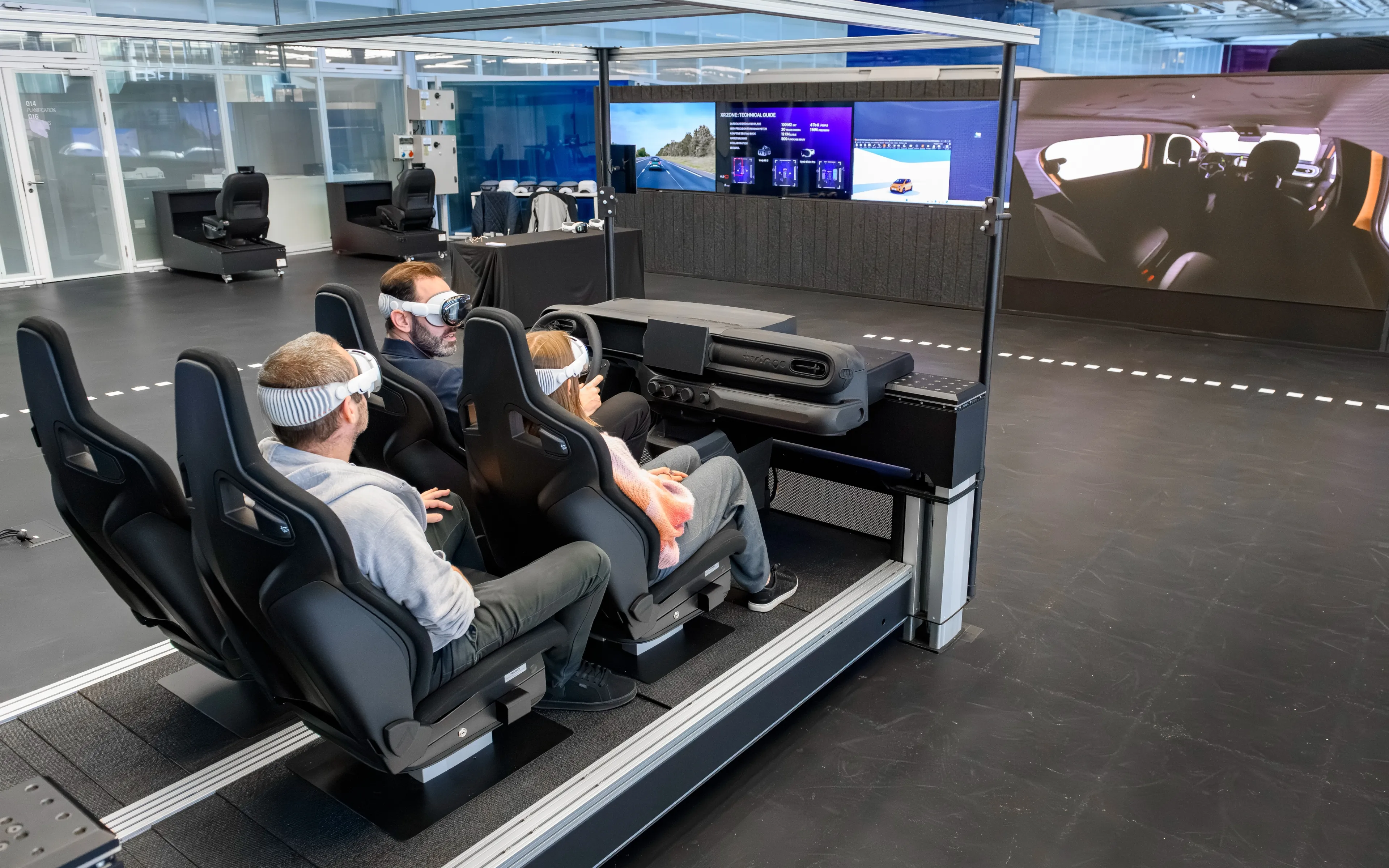
At the heart of Renault’s Technocentre, designers wearing virtual reality headsets are gathered around an invisible car. Their precise gestures move through the air, as if suspended in space. Welcome to the world of Extended Reality (XR), where phygital (a blend of physical and digital) is radically transforming the way Renault Group designs its vehicles. More than just a tool, it’s a creative and industrial revolution that now enables the Group to shorten development times to just two years, while boosting innovation and collaboration.
At the Technocentre, science fiction has already become reality
In a vast space bathed in white light, a designer adjusts his virtual reality headset. Beside him, another manipulates a steering wheel mounted on a variable-geometry platform equipped with seats, while a virtual silhouette of a car interior appears on a multi-meter LED wall. The atmosphere is focused, rhythmic, almost choreographed. Here, creativity comes to life at full scale.
We’re inside the Virtual Reality Studio at Renault’s Technocentre, a space at the crossroads of cinema, technology and automotive design. It’s here that Renault Group’s Design teams explore the shapes, volumes, materials and in-car experiences that drivers and passengers will enjoy in the vehicles of tomorrow, thanks to a next-generation XR platform.
This technology, unique among major European car manufacturers, allows designers to work in a mixed environment that combines real physical elements (four seats, a steering wheel) with immersive digital models. The result: designers can quite literally “step inside” their creations, touch them, experience them as a whole or in detail, and feel them, long before a physical car even exists.
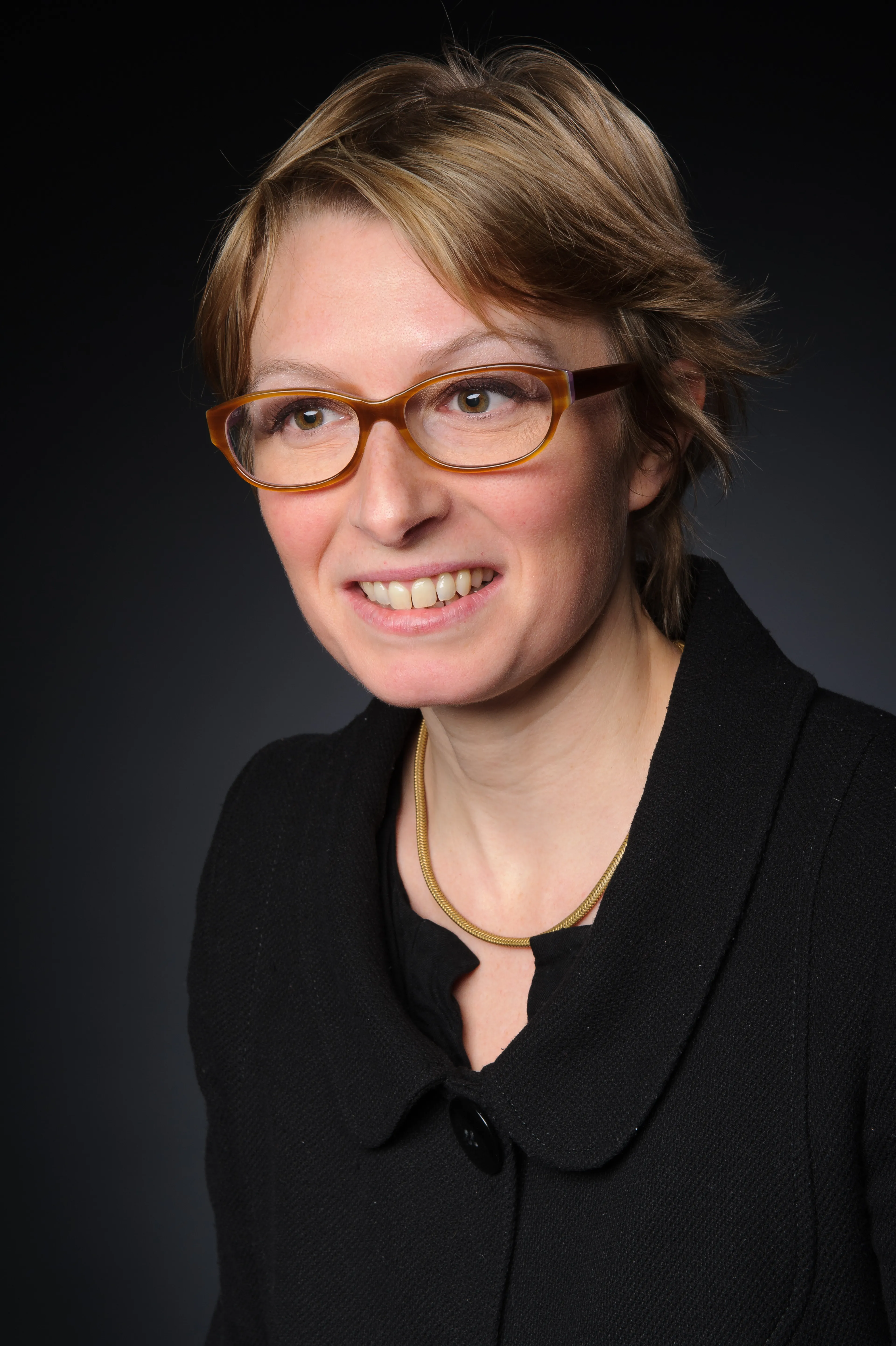
« In this studio, we quite literally step inside the car. We can touch, test and make decisions on every detail in real time. What’s truly exciting is that engineering is fully integrated into the process: designers and engineers collaborate closely, adjusting shapes and functionalities in parallel using the same technologies. It’s a genuine dialogue between creativity and technical feasibility, one that’s transforming the very way cars are conceived. »
Karine Grulet
Tech Team Manager Design
Far more than just an augmented reality tool, this approach is revolutionizing the creative process. Designers and engineers can make decisions faster, with full confidence, and collaborate in real time from opposite sides of the world. From France to Romania, South Korea to India or Brazil (where Renault Group has design centers), everyone sees the exact same car, at the exact same moment, as if they were all standing in the same studio. It’s a true collective immersion that breaks down boundaries and accelerates creation.
Phygital magic: cutting back on prototypes, powering up creativity
If extended reality is the engine, DigyPHY is the turbo. Developed with the Italian design studio Granstudio, this modular platform system is a true feat of engineering and design.
Imagine a physical structure capable of adapting its shape to different car models, while designers, headsets on, instantly experience the interior of a virtual vehicle. Steering wheel, dashboard, central screen, seats: everything is precisely aligned between the real and the virtual, engaging every sense.
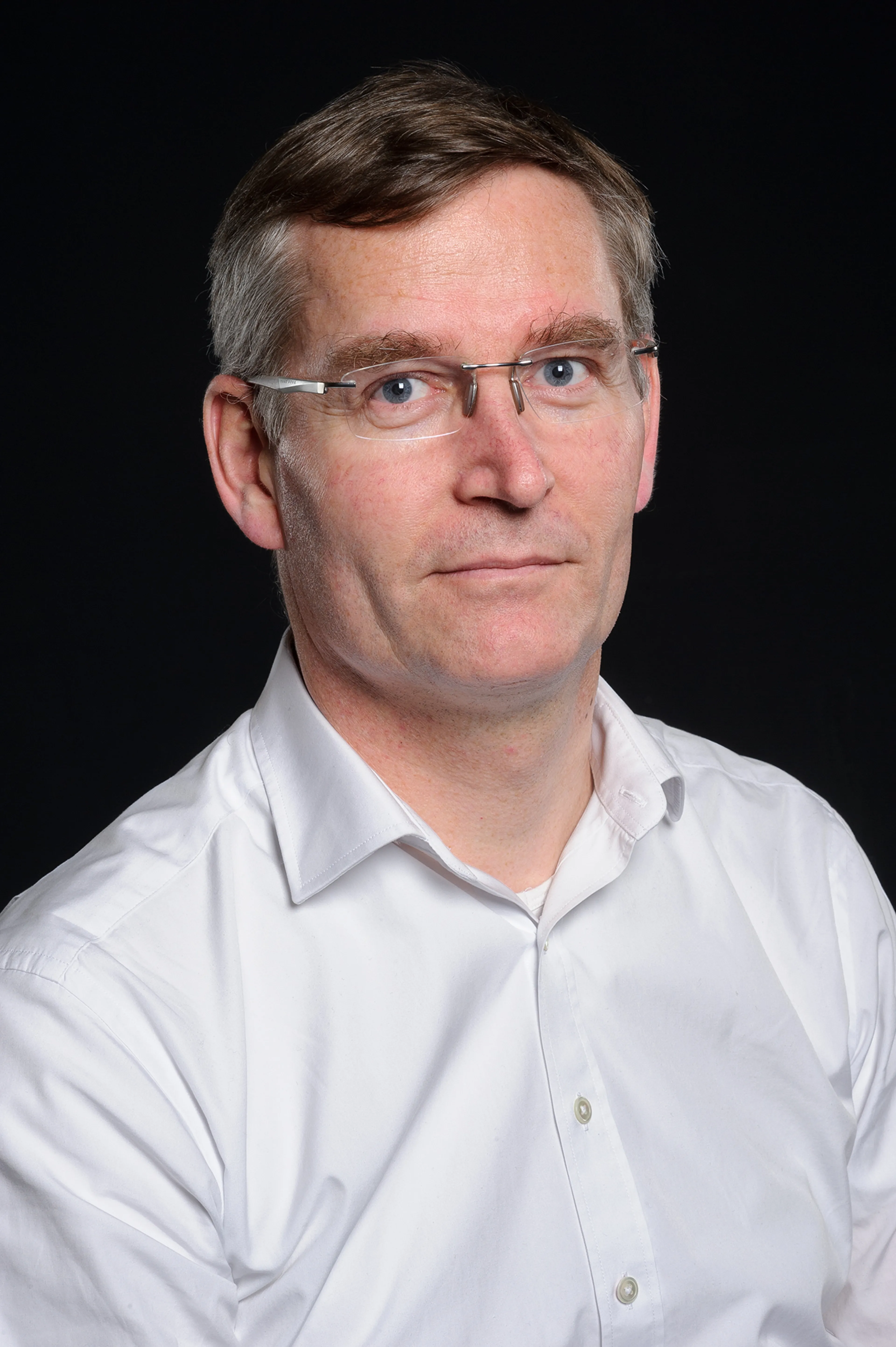
« The brain needs a minimum of physical reference points to truly believe. When you’re sitting in a real seat and the virtual door closes beside you, your perception becomes convincing. That’s what phygital is all about. »
Laurent Wales
Digital Design Director
This hyper-realistic immersion makes it possible to assess habitability, the relevance of design assumptions, visibility, user experience and even the positioning of interface elements, all before a single physical prototype is built.
For example, the teams used DigyPHY to determine the position of the central screen and the side pillar (B-pillar) of a future model. A task that would have taken several weeks using traditional mock-ups was resolved in just a few hours, directly in extended reality.
“Seeing your hands on the steering wheel, touching a real screen, feeling physical elements respond, move and interact with you in virtual reality, it’s pure magic,” says Laurent Wales. “It makes the design process both faster and more tangible.”
Thanks to this convergence of the physical and digital worlds, Renault has succeeded in reducing both development time and prototyping costs, a major leap in productivity achieved without compromising on quality or creativity.
When technology amplifies human genious
At Renault Group, technology doesn’t replace humans, it amplifies their creative power.
That’s the essence of the digital transformation driven by the Design teams.
XR tools, mixed reality headsets, giant screens and multisite collaboration now offer designers an unprecedented field of expression. With a simple gesture, they can switch from one car version to another, compare concepts, test materials and validate an interior layout or a user experience.
Thanks to the digitalization of the design process, iterations between Design and Engineering now happen continuously, leading to smoother, faster and more collaborative stages.
“We’re aiming to make designers fully autonomous,” explains Laurent Wales. “They prepare their own files, launch their reviews and test their ideas without waiting. Technology should serve creative freedom.”
From the first sketch to final validation, the virtual and the real now move forward hand in hand. This hybrid approach makes collaboration more efficient, reduces prototyping costs and aligns all disciplines around a shared vision.
And for Karine Grulet, the human dimension remains essential: “Even in a hyper-digitalized environment, we preserve emotion, sensitivity and collaboration. What truly matters is bringing technology to life in a deeply human way.”
The future is already here
At the Technocentre, the boundary between the real and the virtual is fading a little more each day. In this ecosystem where design becomes immersive, collaborative and instantaneous, Renault Group is reinventing not only the way it creates cars, but also the way it envisions the relationship between humans and technology.
With XR and DigyPHY, design becomes an accelerator of innovation, a driver of emotion and an incredible lever for efficiency. The era of static mock-ups is over, giving way to a living, evolving and phygital design, where the future is already now.
FAQ – Extended reality in Design at Renault Group
What is Extended Reality (XR) as used by Renault Group?
XR combines Virtual Reality (VR), Augmented Reality (AR) and Mixed Reality (MR) to immerse designers in a fully interactive environment. It allows them to work with life-size 3D models while keeping physical elements, enabling faster and more precise design.
DigyPHY is a phygital platform developed in collaboration with Granstudio. It combines a modular physical cockpit with a real-time virtual environment, allowing teams to test vehicle interior design and habitability before any physical prototypes are built.
Thanks to XR and DigyPHY, Design and Engineering now work together seamlessly and simultaneously. The result: significant time savings, lower prototyping costs, improved design quality and unleashed creativity.
